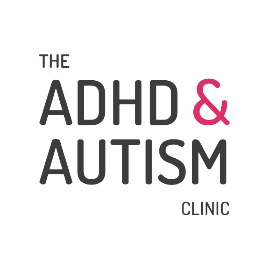Practical Strategies to Build Inclusive Workplaces for ADHD and Autistic Employees
Creating a neurodiversity-friendly work environment means making your workplace more inclusive for ADHD and autistic employees. Focus on raising awareness about neurodiversity, using accessible recruitment practices, offering personalised workplace assessments, and more. These practical steps help neurodivergent employees succeed while boosting productivity and inclusion across your organisation.
Introduction
At The ADHD & Autism Clinic, we understand that creating truly inclusive workplaces begins with informed support and assessment. In the UK, there is growing recognition that evidence-based, practical adjustments can dramatically improve job satisfaction and performance for neurodivergent employees.
Organisations that proactively create neurodiversity-friendly workplaces are better equipped to harness unique talents, reduce staff turnover, and demonstrate genuine commitment to equality and inclusion. This article offers practical, research-informed strategies to help your business build a truly inclusive work environment for ADHD, autistic, and other neurodivergent employees.
Understanding Neurodiversity and Workplace Benefits
What is Neurodiversity?
Neurodiversity is the natural variation in human brain development. It includes conditions such as:
- Autism spectrum disorder (ASD)
- Attention-deficit/hyperactivity disorder (ADHD)
- Dyslexia
- Dyspraxia
- Tourette syndrome
Embracing a neurodiversity-friendly workplace means recognising and valuing these differences as a form of human diversity, much like ethnicity, gender, or culture.
Organisational Benefits
By fostering an inclusive work environment for ADHD and autistic staff, organisations can expect:
- Higher retention of skilled employees
- Greater innovation through diverse thinking
- Improved team performance
- Compliance with legal and ethical standards
The Legal Framework: Equality Act 2010
In the UK, the Equality Act 2010 sets out employers’ legal obligations. It requires them to avoid discrimination and make “reasonable adjustments” to remove barriers for disabled employees.
What Counts as Disability?
ADHD and autism can meet the legal definition of “disability” under the Act if they have a substantial, long-term adverse effect on daily activities. This triggers the duty to provide reasonable adjustments, which might include changes to recruitment processes, the physical environment, or work practices.
Failure to make these adjustments can lead to legal consequences and reputational damage. Importantly, many adjustments are low-cost or free but can transform the experience of neurodivergent employees.
Recruitment and Onboarding
Accessible Recruitment Practices
Inclusive recruitment is the foundation of a neurodiversity-friendly workplace. Consider:
- Simplified, clear job adverts with essential criteria only
- Skills-based assessments rather than over-reliance on interviews
- Adjusted interviews (e.g. questions provided in advance, extra time to process)
These approaches support candidates who may experience anxiety or processing differences in traditional recruitment settings.
Disclosure Guidance
Employers should encourage optional, confidential disclosure of neurodivergence early in the process. This enables reasonable adjustments to be put in place while respecting individual preferences.
Disclosure must be handled sensitively. Not all neurodivergent employees will wish to disclose immediately, and this choice should be respected.
Inclusive Onboarding
Once hired, onboarding should be accessible and structured:
- Visual aids and clear written instructions
- Sensory-friendly induction spaces
- Predictable timetables with flexibility
- Assigning mentors or buddies for support
For more guidance, The ADHD & Autism Clinic offers consultancy on recruitment and onboarding adjustments.
Needs Assessment and Workplace Accommodations
Workplace Needs Assessments
A formal neurodiversity needs assessment helps identify barriers and recommend adjustments tailored to the individual. Services such as Lexxic specialise in these assessments for employers.
These assessments may highlight barriers such as:
- Distracting noise or lighting
- Poor task structure
- Inadequate communication styles
Sample Reasonable Adjustments
Examples of workplace reasonable adjustments include:
- Noise-cancelling headphones or quiet zones
- Flexible start/finish times
- Visual task boards and digital planners
- Break reminders and structured breaks
- Coaching for executive functioning challenges
- Clear written communication of tasks and priorities
At The ADHD & Autism Clinic, we support documentation for such adjustments, enabling employees and employers to agree on sustainable, evidence-based plans.
Sensory Environment and Office Design
Tackling Sensory Overload
Many neurodivergent employees, particularly autistic individuals, experience sensory challenges. Simple, sensory-friendly office design features include:
- Natural lighting with minimal glare
- Acoustic panels or quiet retreat spaces
- Adjustable desk lighting
- Calm, neutral décor
- Personalisation of desks
These changes help prevent sensory overload and support sustained focus.
ADHD-Friendly Strategies
Employees with ADHD may benefit from:
- Structured schedules with task prioritisation
- Time-blocking tools
- Frequent short breaks to sustain focus
- Digital reminders for deadlines
These adjustments can support ADHD accommodations at work, boosting productivity while reducing stress.
Autism-Friendly Office Strategies
For autistic staff, consider:
- Predictable workflows with clear stages
- Structured communication (e.g. clear meeting agendas, minutes)
- Visual cues and signage
- Support for transitions and changes to routine
These strategies can significantly reduce anxiety and improve performance.
Training and Ongoing Support
Neurodiversity Training
A neuro-inclusive workplace best practice is investing in training for managers and teams. Training should cover:
- Understanding neurodiversity
- Recognising unconscious bias
- Implementing reasonable adjustments
- Fostering empathetic communication
Organisations such as ACAS provide guidance and training on inclusive practices.
Ongoing Support
Beyond training, employers should embed:
- Regular check-ins and feedback sessions
- Optional ADHD coaching at work
- Peer-support networks
- Clear channels for requesting adjustments
This demonstrates a genuine commitment to inclusion and employee wellbeing.
Culture and Communication
Open Discussions
Cultivating an open, respectful culture is crucial. Encourage:
- Confidential conversations about adjustments
- Management modelling inclusive behaviours
- Respect for disclosure choices
Fostering open dialogue reduces stigma and builds trust.
Celebrating Neurodiversity
Events such as Neurodiversity Celebration Week or Autistic Pride Day provide opportunities to:
- Raise awareness
- Challenge stereotypes
- Embed neurodiversity into organisational values
Promoting a double empathy mindset—where both neurotypical and neurodivergent perspectives are understood—enhances collaboration and respect.
Conclusion
Building a neurodiversity-friendly workplace is both an ethical obligation and a strategic opportunity. By focusing on six pillars:
- Understanding neurodiversity
- Legal clarity under the Equality Act 2010
- Inclusive recruitment and onboarding
- Needs assessments and tailored accommodations
- Sensory-friendly office design
- Training and ongoing support organisations can unlock the talents of neurodivergent employees and strengthen their workforce.
Contact The ADHD & Autism Clinic to begin neurodiversity needs assessments or coaching for your teams.
FAQs
1. What is a neurodiversity-friendly workplace?
A neurodiversity-friendly workplace values brain differences and removes barriers for neurodivergent employees through inclusive recruitment, tailored accommodations, and supportive culture.
2. What reasonable adjustments can be made for ADHD at work?
Examples include flexible working hours, noise-cancelling headphones, structured task lists, coaching, and regular check-ins to support planning and focus.
3. How does the Equality Act 2010 apply to neurodiversity?
It requires employers to avoid discrimination and make reasonable adjustments if a neurodivergent condition meets the legal definition of disability.
4. How can office design support neurodiversity?
Sensory-friendly features such as natural lighting, quiet zones, and predictable workflows reduce stress and improve focus for neurodivergent staff.
5. What is a workplace needs assessment?
A professional assessment that identifies barriers and recommends adjustments tailored to the employee’s specific neurodiversity-related needs.
Glossary
Neurodiversity: The concept that neurological differences are a natural variation in humans.
ADHD: Attention-deficit/hyperactivity disorder, characterised by inattention, hyperactivity, and impulsivity.
Autism: A neurodevelopmental condition affecting social communication and behaviour, often linked to sensory differences.
Reasonable adjustments: Changes to remove barriers for disabled employees under the Equality Act 2010.
Sensory-friendly office design: Workspace modifications that reduce sensory overload.
Workplace needs assessment: A formal evaluation of barriers and potential adjustments for a neurodivergent employee.
Double empathy: A theory that communication breakdowns between autistic and neurotypical people arise from mutual misunderstanding.

